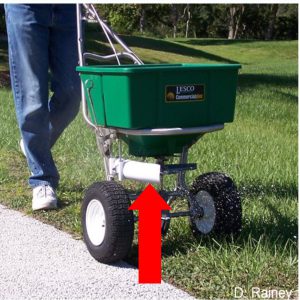Are you looking to hire a landscaper? Knowing what to look for will help you get the most for your money. Many homeowners or homeowner associations evaluate their landscape professional on price alone. We know how to compare prices, however, we often get what we pay for. So how can what are some other criteria that we can evaluate when looking for a landscape professional?
Plants, when managed sustainably, can live longer in the landscape and resist pest issues better which can save money in the long term. To find landscape professionals that understand what plants need and how to manage problems correctly they will need to have had training and experience. If we award the landscape contract to the lowest bidder then the landscape contractor will be forced to hire the cheapest (least experienced or trained) labor to successfully win the bid. So what else can we look at?
Minimum qualifications to be held by landscape professionals in Florida to help protect you, your property, and our environment:
For Landscape Maintenance Professionals (mow and blow)
- Landscape Best Management Practices (BMP) certification – can be verified with the Manatee County Natural Resources Department and is required by everyone who works in landscape maintenance.
- Worker’s Compensation Insurance – can be verified at https://apps8.fldfs.com/proofofcoverage/Search.aspx
- General Liability Insurance – ask for proof of insurance

Deflector shield to keep fertilizer applications off of hard surfaces and out of bodies of water
For Landscape Fertilization
- Fertilizer applicators are required in Florida to have a Limited Urban Turf Fertilizer License. Applicator licenses can be verified at http://ceupublicsearch.freshfromflorida.com/PersonSearch.asp
- Worker’s Compensation Insurance – can be verified at https://apps8.fldfs.com/proofofcoverage/Search.aspx
- General Liability Insurance– ask for proof of insurance
For Landscape Pesticide Applications (including herbicide i.e. Round-Up)
- Certified Pest Control Operators license holders or their ID card holders can apply pesticides in turf and landscape bed areas or a Limited Commercial Landscape Maintenance Pesticide license holders are restricted to apply in landscape beds only – both can be verified at http://ceupublicsearch.freshfromflorida.com/PersonSearch.asp
- Landscape BMP certification
- Limited Urban Turf Fertilizer License if applying fertilizer as in a weed and feed product
- Worker’s Compensation Insurance – can be verified at https://apps8.fldfs.com/proofofcoverage/Search.aspx
- General Liability Insurance of at least $500,000– required for pesticide licensing through the Florida Department of Ag and Consumer Services
For Pruning/Trimming/Removing Trees
- International Society of Arborists (ISA) Certification – can be verified at http://www.isa-arbor.com/findanarborist/arboristsearch.aspx
- Landscape BMP certification
- Limited Urban Turf Fertilizer License if applying fertilizer
- Worker’s Compensation Insurance – can be verified at https://apps8.fldfs.com/proofofcoverage/Search.aspx
- General Liability Insurance– ask for proof of insurance
There are a number of other licenses, certifications, and professional organizations that a landscape professional may discuss with you. Other certifications or training can include a college degree in appropriate field of study, a Landscape Architect certification, Florida Nursery, Growers and Landscape Association (FNGLA) certifications, Landscape Management Association (LMA) certifications, Florida Water Star Accredited Professional (AP), National Association of Landscape Professional, Florida Irrigation Society.
Some general landscape Best Management Practices (BMP) to look for in a professional and can be discussed at the time of interview include:
Irrigation –
- Use low volume irrigation to conserve water and apply only where necessary. Calibrate the irrigation system for complete coverage and to determine run times.
- Over-irrigation can cause excess weeds, thatch, fungus and other pests which can lead to chemical applications for control.
- Having a rain-sensing shut off device is the law. These devices must be in working order prior to any repairs.
Mowing –
- Blow off mowers prior to leaving the site. This helps to remove weed seeds and infected vegetation and keeps from spreading it to the next location.
- Be sure mower blades are sharp. This practice lessens damage to turf and leads to healthier turf.
- Mow at the appropriate height for turf variety. St. Augustine should be maintained around 3-4”. Taller turf can shade out weed seeds. Maintaining turf at an appropriate height can generate deeper roots to make turf more drought tolerant.
- Grass clipping should be blown back onto turf unless trying to control heavy weed infestations when they should then be removed from the site.
Pruning/Trimming –
- Constant sheering can damage plants and can cause growth at the top only making “leggy” shrubs.
- Crape Myrtles do not require pruning but can be pruned to maintain health. Stop Crape Murder!
- Pruning equipment should be sterilized between job sites (OK), between trees (better), or between cuts (best) especially when a disease is present. Pruning equipment can spread disease among trees, especially palm trees which have a number of threats currently. Hardwood tree limbs require a 1-2-3 cut to lessen damage to the tree.
Fertilization –
- Follow both state and local government regulations. UF/IFAS recommendations are for specific turf varieties and regions.
- Over-fertilization can cause thatch, fungus and other pest problems which may lead to the application of additional chemicals to control.
- Over-fertilization can runoff into waterways causing algae growth or can leach into groundwater
- Practice Integrated Pest Management (IPM). Scout landscape for pest problems. Allow natural predators a chance when possible. Cut
- Spot treat if necessary using soap and oil mixture or least toxic method.
- When chemicals are necessary, choose a newer, more selective chemical such as a microbial insecticide or insect growth regulator.
For more information visit our website or contact Michelle Atkinson, Environmental Horticulture Agent, at the Manatee County UF/IFAS Extension office 941-722-4524 or michelleatkinson@ufl.edu
 0
0

